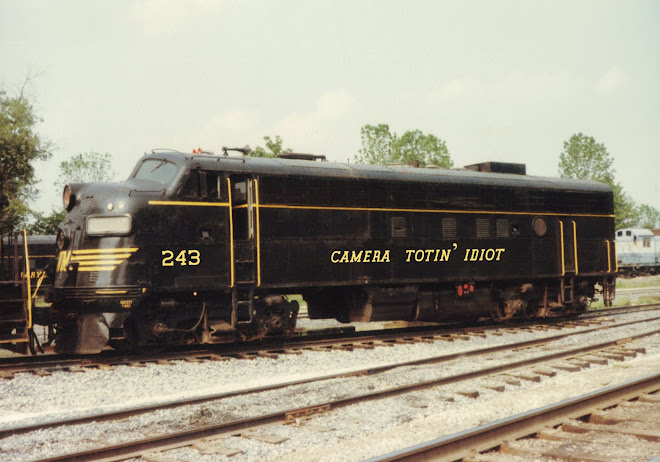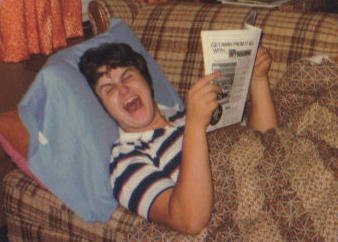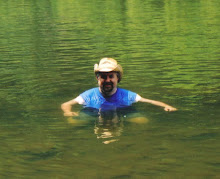Bill was my favorite because he was from my hometown and he did his part to put the Baltimore & Ohio and the Western Maryland Railway on the railfan map. Confused? Let me explain. I noticed early on that many of the railroad magazines of the time were in love with the west: Union Pacific on Sherman Hill, the Santa Fe on Cajon Pass, the Southern Pacific climbing through the Sierra Nevada's, the Rio Grande on Soldier Summit, and so on.
Back here in the east Bill was out there, in the hills of my native western Maryland, as well as the hills of Pennsylvania and West Virginia. And he wasn't alone, some of the greatest railroad photographers of their time were there as well. Guys like O. Winston Link, Ross Grenard, John Krausse, Deanne Mellander, Bob Collins, Jim Shaughnessy, Herb Harwood, John G. King, Dwight Jones, and Don Ball brought back timeless images of the golden age of railroads here in the east: the Pennsylvania's struggle to haul trains over the Alleghenies at Horseshoe Curve, the B&O's assaults on Sand Patch and Seventeen Mile Grades, the Western Maryland's climb up the Alleghenies, the Southern climbing up Saluda grade, and the N&W storming up Christansburg Grade. Shots guaranteed to make any western photographer drool.
Time passed and I came along. I was young, uneducated in many aspects of photography, and had only the vaguest clue of what I wanted to do with a camera. Bill taught me much over the years. The funny part was that he knew what he was passing on but I didn't recognize his stories as these little pearls of wisdom. I thought he was just having fun talking about the good old days. But as time passed I learned, oh I did learn.
As long as I live I'll remember two things he said to me. The first was an answer to a question I had asked back around 1984-85. Bill gave up photographing trains by the mid-sixties and I asked why. He said, 'I looked around one day and realized everything looked the same. There was very little difference between a B&O GP-40 and a Western Maryland GP-40. But steam engines looked and sounded different. A B&O pacific type was different from a Western Maryland pacific, the B&O Mountain types were different from the C&O Berkshires and so on.'
At the time I thought that was about the dumbest thing I'd ever heard. He was the right guy, in the right place, at the right time. But then I woke up one day and it was 1995 and I looked around and found out how right Bill was. All the diesel locomotives that I had photographed over the years had changed. The B&O, Western Maryland, C&O, and the Chessie System names and colors were gone, replaced by mega-railroad CSX. What was even worse, cabooses were gone, replaced by battery operated flashing lights. Also gone were the interlocking towers and their human operators. Bill was right, oh Lord, was he ever right. Part of me curled up in a ball that day.
The second thing Bill said that I'll never forget came in 1985. I'd taken a drive with him up to Hyndman. On the way back down we stopped at Corriganville (my old hometown). Anyway we get out and walk up to the B&O bridge over Jennings Run. He had just released a video on the B&O and we were at the spot where he filmed a passenger train doing a 'roll-over,' meaning the train rolled over top of him. I asked how he did it. He said he mounted his camera on a board, went under the bridge and stuck it up between the ties and waited for the train to come along. No sooner had he said that, when he turns to me, with a twinkle in his eye and says, 'you know what I always wanted to do? I always tinkered with the idea of standing where we are now (right beside the eastbound mainline, at the east end of the bridge) and laying a sleeping bag on the ground behind me.' What for? I asked, taking a keen interest. 'Well,' he continued, 'the first eastbound that comes along, I'd zoom in real tight, fill the viewfinder, you know. And as he passed, I'd fall back on the sleeping bag, and roll, trying to keep the train in the viewfinder. It'd look like the train ran over me. Don't you see?'he asked with a slight chuckle. I've done some pretty zany things in the name of getting a photo, but Bill was crazier than I ever was.
I suppose the Camera Totin' Idiot was born that day.
Two of my teachers, and friends, Bill Price and John King, in 1989.

After his retirement, Bill moved to North Carolina and I saw him less and less. However, we did exchange Christmas cards, and we always include a snapshot in our cards. Here's a shot by Bill that came in a card in 1996. B&O EM-1 7619 on Sand Patch grade at Williams, Pennsylvania in October of 1953.

Bill is gone now, but he left a huge shadow, not to mention a huge pair of shoes to fill.
And now a few by me.



Well, Bill, how am I doin' so far?"
Not bad, kid, not bad. But I would've used a sleeping bag on that last one.
That's your shtick not mine. Besides I'm not that crazy.
Thought you were the Camera Totin' Idiot?
S'cuse me while I get my bag.
Now you're learning. Say, can I ask you a question for a change?
Sure.
What's digital?
You have been gone a while. Come on. It's time I took you for a drive...





No comments:
Post a Comment